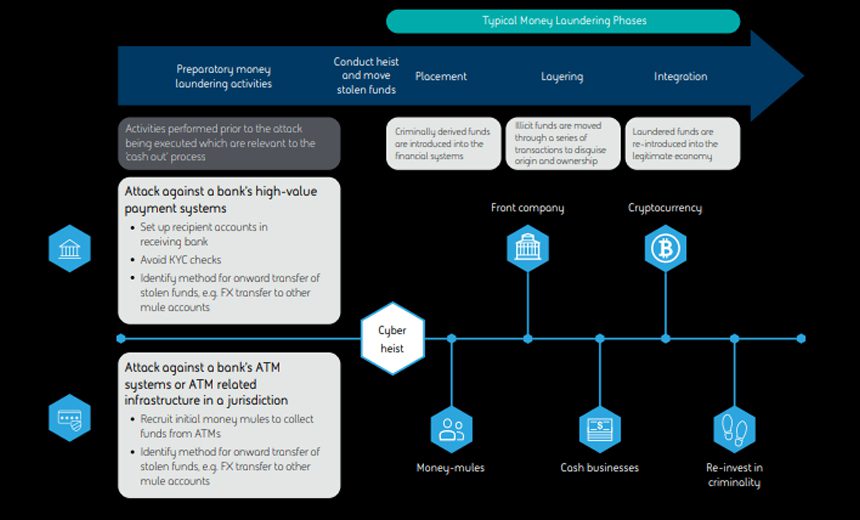Cybercrime is a rapidly growing industry that poses a significant threat to individuals, businesses, and government institutions. The increasing advancement of technology has opened up numerous vulnerabilities that cybercriminals use to perpetrate their malicious activities. There are several methods that cybercriminals commonly use to carry out their attacks, including phishing scams, malware attacks, password attacks, DDoS attacks, SQL injection attacks, social engineering attacks, man-in-the-middle attacks, malvertising attacks, Wi-Fi eavesdropping attacks, and physical attacks. To protect oneself and one’s organization, it is essential to stay informed about the various types of cybercrime and develop robust security policies. Additionally, using antivirus software, firewalls, encryption, and educating oneself and employees can provide an additional layer of protection.
10 Common Methods Used by Cyber Criminals
Cybercrime has become one of the most significant threats to individuals, businesses, and governments worldwide. The exponential growth of technological advancements has created an environment in which cybercriminals can exploit vulnerabilities that they use to perpetrate their crimes. Cybercrime is a lucrative industry, and as such, cybercriminals constantly come up with new ways to carry out their attacks, but some methods are more common than others.
1. Phishing Scams
Phishing scams are a prevalent method used by cybercriminals. In a phishing scam, the attacker sends an email containing a link that leads to a fake website that looks like a legitimate one. Once the victim enters their personal information, the attacker can use this information for identity theft, account takeover, or other fraudulent activities.
2. Malware Attacks
Malware attacks involve the use of malicious software, which can take various forms such as ransomware, spyware, Trojan horses, and viruses. The attacker intentionally embeds the malicious code into a legitimate-looking software, which causes the software to behave in ways that the attacker intends. Malware can result in data loss, financial losses, or allow the attacker to gain unauthorized access to a network.
3. Password Attacks
Password attacks involve attempts to guess or crack a user’s password. Cybercriminals use software that can generate millions of password combinations per minute. Once they have the password, they can gain access to sensitive information such as bank accounts, social media accounts, or email.
4. DDoS Attacks
Distributed Denial of Service (DDoS) is a method that involves overwhelming a network or server with traffic from various sources. Cybercriminals use this tactic to bring down networks or websites, which can result in loss of data, revenue, and reputation damage.
5. SQL Injection Attacks
SQL injection attacks target web applications and involve the exploitation of application vulnerabilities that allow an attacker to manipulate a web application’s database. The attacker can use this method to access, modify, or delete confidential data.
6. Social Engineering Attacks
Social engineering attacks involve the manipulation of people into divulging sensitive information or performing certain actions that benefit the attacker. These attacks can take many forms, such as baiting, pretexting, or phishing.
7. Man-in-the-Middle Attacks
Man-in-the-middle attacks occur when a cybercriminal intercepts communications between two parties. The attacker can listen in on conversations and potentially steal confidential information such as banking credentials, login information, or credit card numbers.
8. Malvertising Attacks
Malvertising attacks involve the use of malicious ads, which can lead the victim to a fraudulent or infected website. Malvertising attacks can affect both computers and mobile devices.
9. Wi-Fi Eavesdropping Attacks
Wi-Fi eavesdropping attacks involve the interception of Wi-Fi communications that are not encrypted. The attacker can gain access to sensitive information such as passwords or banking credentials.
10. Physical Attacks
Physical attacks involve physically tampering with computer systems or hardware devices. The attacker can insert malicious code, install keylogging software, or steal devices that store sensitive information.
Protecting Yourself
Protecting yourself against cybercrime requires a combination of vigilance and technology. It’s important to educate yourself and your employees about the dangers of cybercrime, and develop robust security policies to mitigate any risks. Additionally, using antivirus software, firewalls, and encryption can provide an additional layer of protection.
Remember, cybercrime can have devastating consequences, and it’s everyone’s responsibility to ensure that they take the necessary steps to protect themselves and their organizations. By staying informed and implementing robust security measures, you can minimize the risk of becoming a victim of cybercrime.
